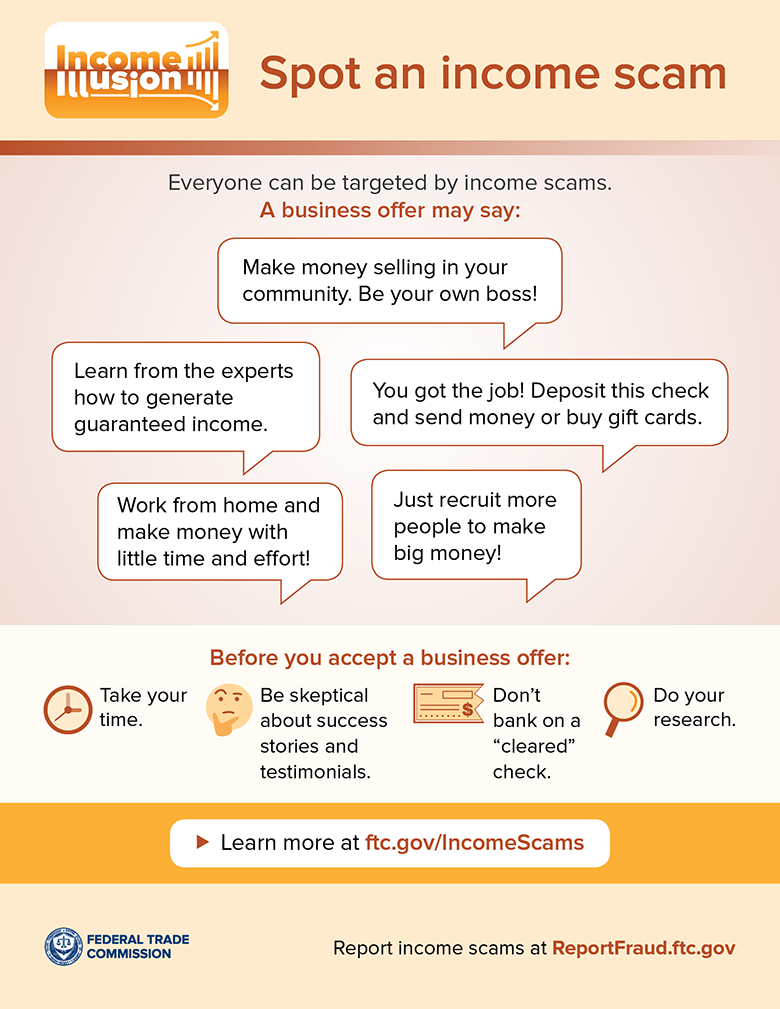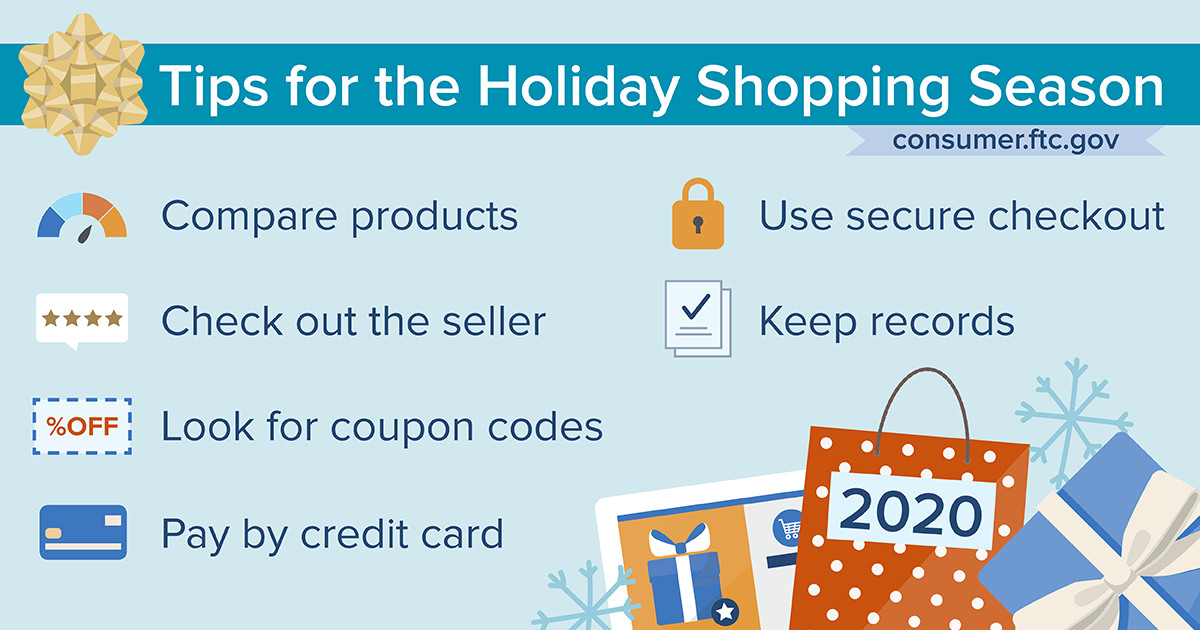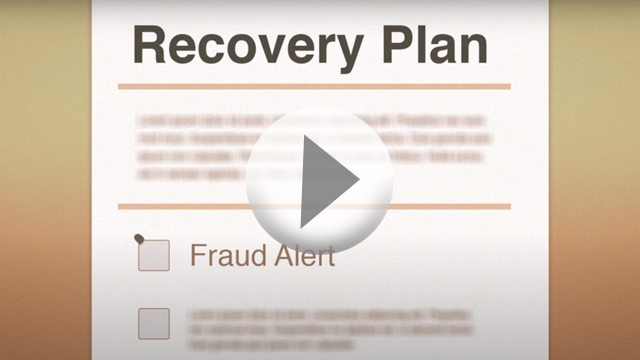Source: Federal Trade Commission: Consumer Information
You’ll make a lot of money. I’m going to show you how to do it — and using my program, I guarantee you’ll be successful. If you see that in an ad, there’s likely a scammer behind it. Just last week, the FTC announced Operation Income Illusion, a nationwide effort to shut down income scams that used false promises like this to trick people into believing they would make a lot of money if they bought one of these programs. In each case, it turned out to be, well, an illusion.
Before you pay for a program that promises to help you invest your money, consider these things:
- Statistics and testimonials can be faked. Scammers want you to believe their program is always successful and low-risk.
- Scammers exaggerate the press of time. They want you to feel pressured to commit now without doing research on the offer.
- No one can guarantee a specific amount of return on an investment. Scammers might claim that you can make thousands of dollars per day or per month for life, but no one can actually guarantee that an investment will be successful.
Read more tips in the article Real Estate and Investment Scams. You can also subscribe to get FTC consumer alerts at ftc.gov/consumeralerts. And if you want to report a scam like this, please visit ReportFraud.ftc.gov.




 Source: Federal Trade Commission: Consumer Information
Source: Federal Trade Commission: Consumer Information Source: Federal Trade Commission: Consumer Information
Source: Federal Trade Commission: Consumer Information

